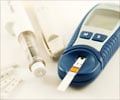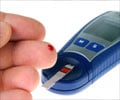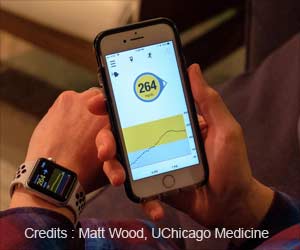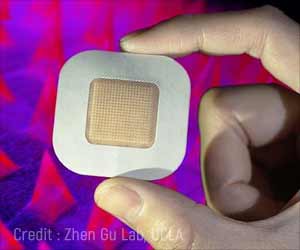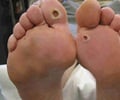Are you a Diabetic who is tired of multiple finger pricks to keep blood sugar levels in check? Continuous Blood Glucose monitoring might be your savior on this journey of diabetes.
- Continuous Glucose Monitoring (CGM) is the technology that helps to track blood sugar levels in the body in real time using implantable bio-sensors
- CGM devices can monitor blood glucose trends, activate alarms as well as help the patients to monitor the treatment they are undergoing
- This technology offers an insight as well as a solution to better diabetic care in a country like India where lifestyle diseases like diabetes are on an all-time high
CGM devices: The Need of the Hour
Diabetic patients can be insulin dependent (Type 1) or non- insulin dependent (Type 2) based on the capacity of their body to produce insulin, which is the sugar lowering hormone in the body. Several patients of both type 1 as well as type 2 Diabetes may need to administer insulin frequently to keep their blood glucose levels in the normal range, and this warrants checking blood sugar multiple times a day.This is the problem statement that leads to either high or low administration of insulin by the patient and even non- compliance to treatment altogether. Hence, diabetic patients are prone to either very high (hyperglycemia) or very low blood glucose levels (hypoglycemia) both of which are fatal for the patient. CGM devices tackle this problem in an innovative and non-invasive way.
CGM device is a wearable device that can be implanted under the skin and fixed with adhesive to the patient’s arm. It has a sensor that senses and calibrates the glucose levels by measuring the sugar levels in the fluid in between the cells (interstitial glucose). This data can be transmitted to a hand held device like a smartphone and recorded in an application as well. CGM devices keep a 24 hour record and help track blood glucose trends as well (1✔ ✔Trusted Source
Continuous Glucose Monitoring
Go to source).
Who Benefits From CGM the Most?
- Patients with recurrent or severe hypoglycemia or impaired awareness of it
- A condition or disability where the patient cannot monitor his or her blood glucose by capillary blood glucose monitoring but could use a CGM device
- Patients who require to check their blood glucose at least eight times daily
- Patients who need help from a health care worker or healthcare professional to monitor their blood sugar levels (2✔ ✔Trusted Source
Type 2 diabetes in adults: management
Go to source)
Advantages and Disadvantages of Using a CGM device
Advantages
- It is a non-invasive, one-time technology that helps monitor blood glucose in patients who require frequent blood glucose monitoring
- It can help set alarm limits for intervention, record data for long-term trend analysis, as well as help monitor the treatment that the patient is taking. The data can be sent to healthcare professionals over computer networks as well
- It measures the blood sugar fluctuations in real time that take place because of insulin administration, diet, stress as well as physical activity
- It can help to make several lifestyle modifications that serve as adjuvant therapy for diabetic patients
- It’s a boon for children with type 1 diabetes, who get to monitor their blood glucose levels without the pain of needle pricks
Disadvantages
- It is an expensive device, and in a developing country like India, the accessibility and availability of CGM devices are still in their early stages
- The biosensors and transmitters need to be changed every 7 to 14 days, making it a device requiring timely maintenance and calibration
- It requires a medical certification and prescription, along with a clear understanding of the device and its limitations
- It is more expensive than conventional glucometers and requires blood glucose to be checked at least twice using the glucometer for standardization and calibration
Future of Health Care Technology in Diabetes: Where are we Headed?
A CGM is one of the “artificial pancreas” systems that are being developed to treat people with diabetes. In 2016, the U.S. Food and Drug Administration approved a type of artificial pancreas system called a hybrid closed-loop system (3✔ ✔Trusted SourceThe Artificial Pancreas Device System
Go to source),
This system senses your blood sugar levels throughout the day and night through a CGM and automatically injects the right amount of insulin required by the body (4✔ ✔Trusted Source
What is continuous glucose monitoring?
Go to source).
CGM is just one of the many devices in Diabetes technology that are waiting to unveil their potential in helping mankind. With further advancements and refinements, CGM-based technology is likely to be a household medical device in the future.
References:
- Continuous Glucose Monitoring - (https://my.clevelandclinic.org/health/drugs/11444-glucose-continuous-glucose-monitoring)
- Type 2 diabetes in adults: management - (https://www.nice.org.uk/guidance/ng28/chapter/Recommendations#blood-glucose-management)
- The Artificial Pancreas Device System - (https://www.fda.gov/medical-devices/consumer-products/artificial-pancreas-device-system)
- What is continuous glucose monitoring? - (https://www.niddk.nih.gov/health-information/diabetes/overview/managing-diabetes/continuous-glucose-monitoring)
Source-Medindia


